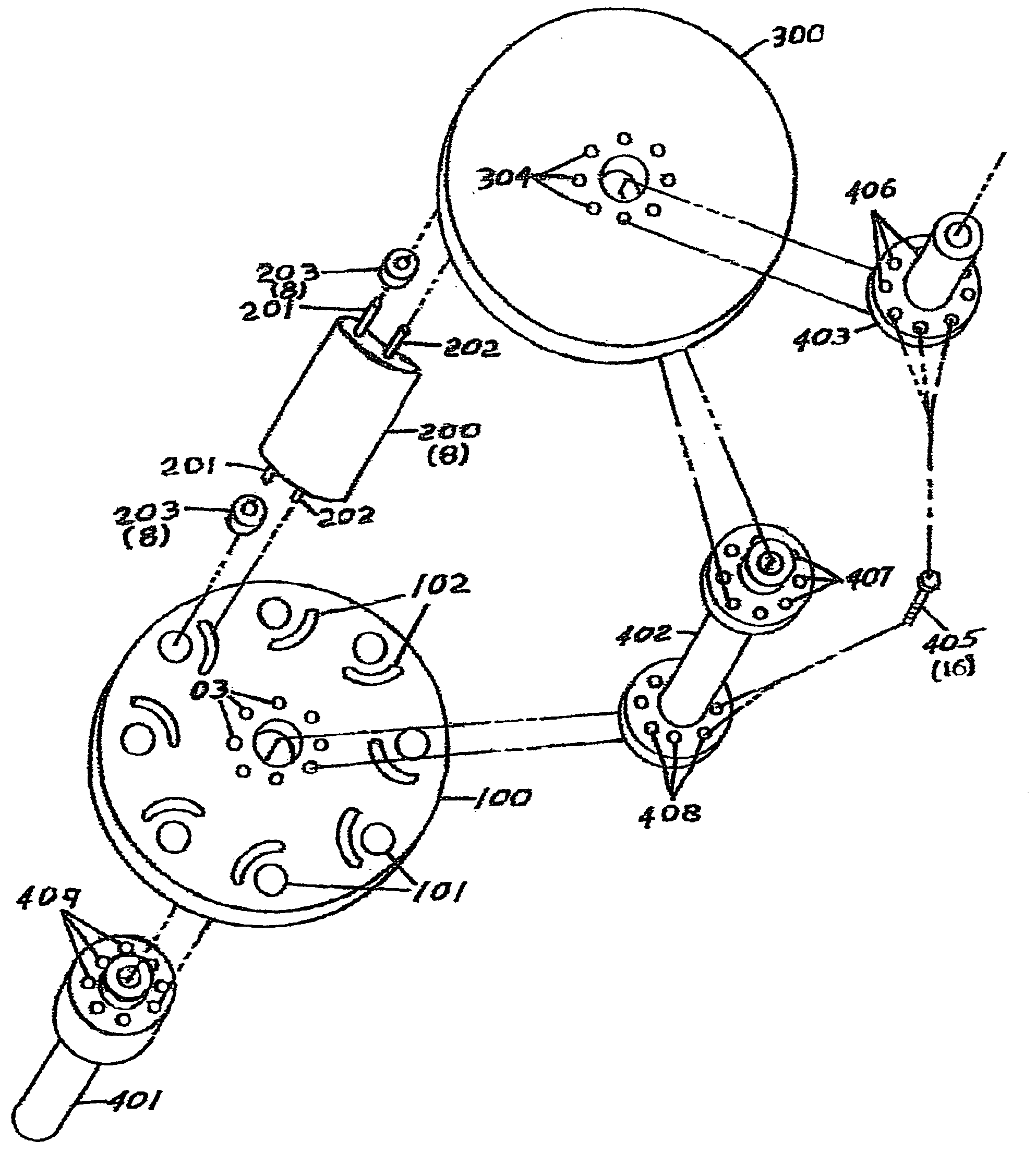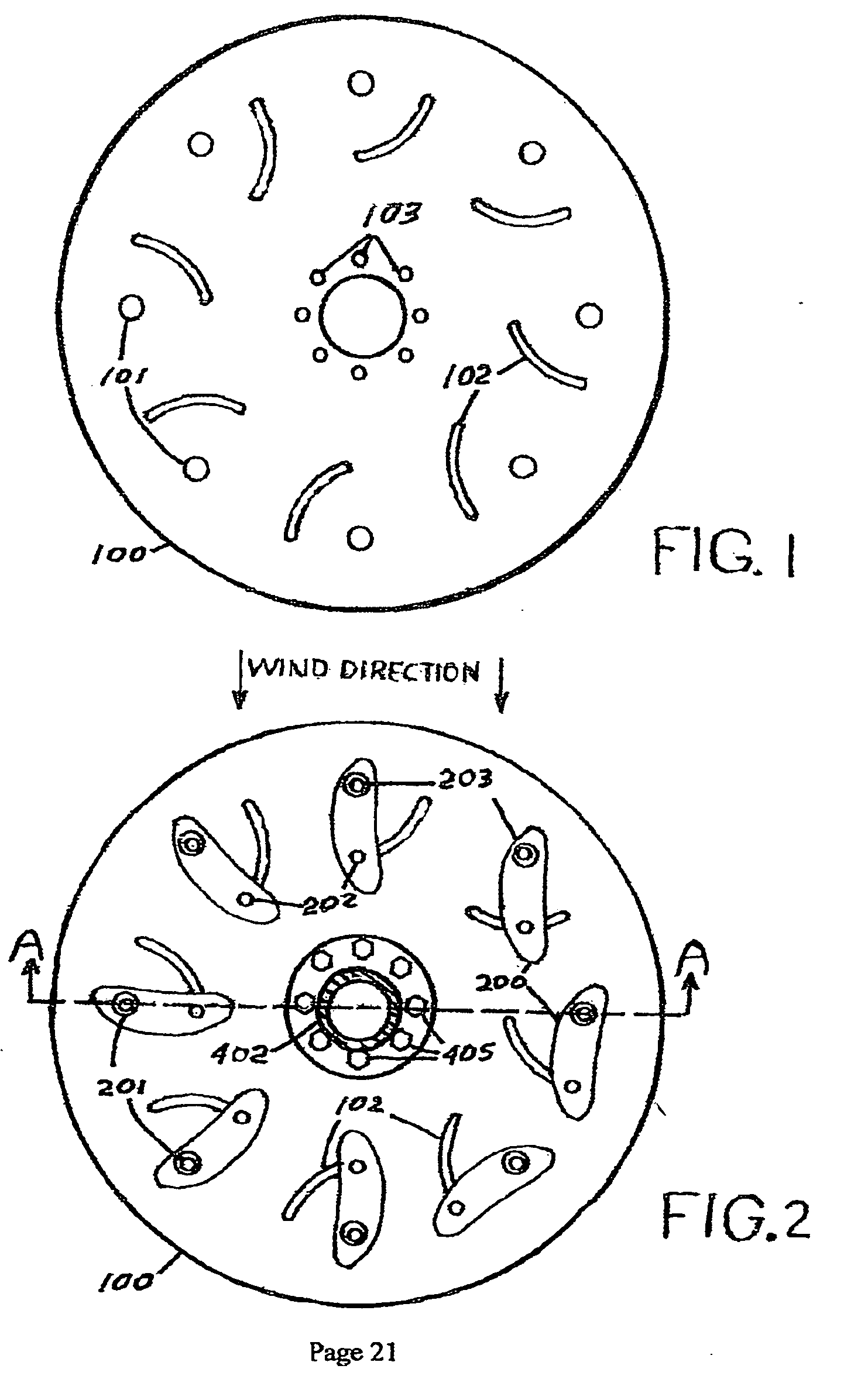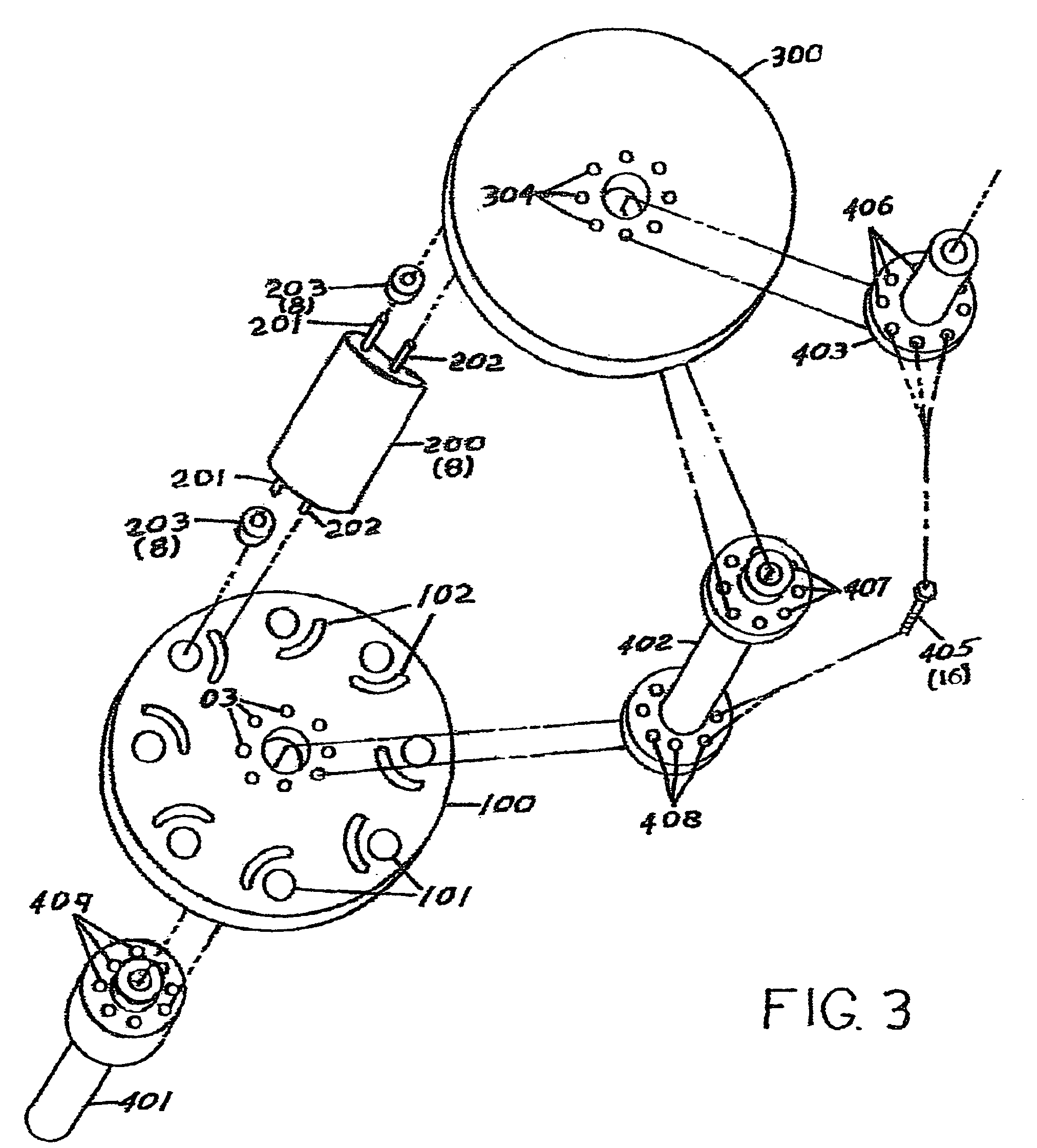Advanced vertical shaft wind turbine power generator
a technology of wind turbines and power generators, applied in the field of vertical shaft wind turbines, can solve the problems of increasing complexity and cost of control and actuation systems, affecting the environment, and reducing the number of torsion stresses, and achieve the effect of robust structure and reducing torsion stresses
- Summary
- Abstract
- Description
- Claims
- Application Information
AI Technical Summary
Benefits of technology
Problems solved by technology
Method used
Image
Examples
Embodiment Construction
[0033]FIG. 1 The invention will now be described with reference to the drawing figures, in which the reference numerals refer to like parts throughout. The embodiment of the invention consists of a rotating assembly of aerodynamic configured blades subject to the force of the wind that will convert the rotational motion of the assembly to a force to power the driveshaft which couples to a power generator. Illustration on FIG. 1 shows the lower disk 100 configured for counter clockwise rotation, however the geometry of the disks and blade of the design could be configured in a mirror image to enable clockwise rotation. The lower disk 100 provides recesses 101 to accept the blade pivot bearings 203 identified in FIG. 2 and provides blade positioning channels 102 to accept the blade travel limiting follower pin 202 indentified in FIG. 2. Provision for assembly of the disk 100 and the lower section of the drive shaft 401 indentified in FIG. 3 and middle section of the drive shaft. 402 i...
PUM
 Login to View More
Login to View More Abstract
Description
Claims
Application Information
 Login to View More
Login to View More - R&D
- Intellectual Property
- Life Sciences
- Materials
- Tech Scout
- Unparalleled Data Quality
- Higher Quality Content
- 60% Fewer Hallucinations
Browse by: Latest US Patents, China's latest patents, Technical Efficacy Thesaurus, Application Domain, Technology Topic, Popular Technical Reports.
© 2025 PatSnap. All rights reserved.Legal|Privacy policy|Modern Slavery Act Transparency Statement|Sitemap|About US| Contact US: help@patsnap.com



